Using Hardware Emulations to Use Daw Like Analogue Mixer
How to simulate analogue recording and mixing chains in your DAW
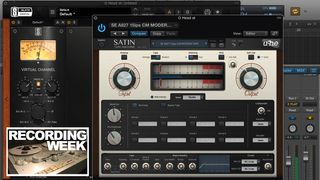
RECORDING Week : Once upon a fourth dimension, everything in the recording studio was analogue - mics, mixers, outboard, tape… everything. In recent years, of course, the convenience, affordability and ability of digital applied science - first hardware, then software - have trumped those cumbersome, expensive old boxes in terms of ubiquity; only the fact is, the characteristic warmth and grit of valve- and transformer-based gear are arguably more sought subsequently at present than they ever have been.
Fortunately, the current generation of counterpart-emulating plugin furnishings are convincing enough in their sound and vibe to serve as far more than mere stand-ins for the existent affair. Nosotros'd challenge anyone to hear the difference between a Pultec EQP-1a and Universal Audio'south plugin virtualisation of information technology in the mix, or be 100% confident in stating that the hiss and saturation of u-he'south Satin tape emulation weren't actually being generated by the the real mechanical affair. Truly, the computer musician has never had it so good when information technology comes to getting authentic analogue processing in their virtual studio.
In this walkthrough, we'll evidence you lot how to use a range of incredible plugins to construct three analogue-style recording and mixing chains.

Step one: Our showtime setup mimics mixing downwardly from an counterpart desk, with the three main components in signal period order: a tape auto with its outputs running into mixing desk-bound channels, summed at the desk'southward mix jitney. For a clean, quiet tape audio, on each aqueduct nosotros add u-he'south Satin with a modern high-output tape blazon.
Full mix apartment
Full mix with tape sim

Step 2: The side by side stage is the desk channel itself, inserted after the tape simulation. Slate Digital'southward Virtual Aqueduct includes six desk emulations, which you can mix and friction match as you please, but we'll proceed it accurate and use the aforementioned model for all channels - in this case, the clean, uncoloured Brit N. If we use this plugin'due south grouping feature, we can switch settings on all grouped tracks simultaneously.
Full mix with tape and console sim
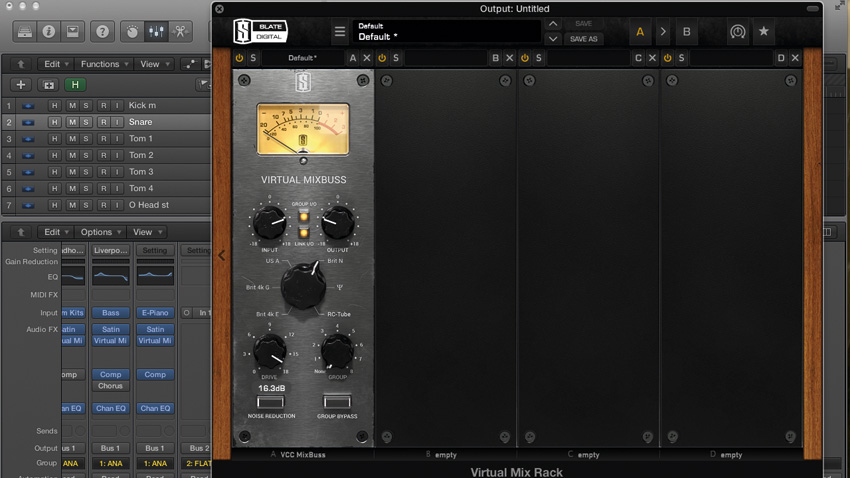
Footstep iii: Now for the mix double-decker. Slate Digital Virtual MixBuss, placed on our DAW'south master output bus, allows united states of america to set up input level and drive, so we can add together the right amount of color, again using the clean Brit N setting. The results are best assessed by A/B-ing with the unprocessed mix, and to demonstrate, we've got ii setups to switch between.
Total mix with tape and panel sim and MixBuss
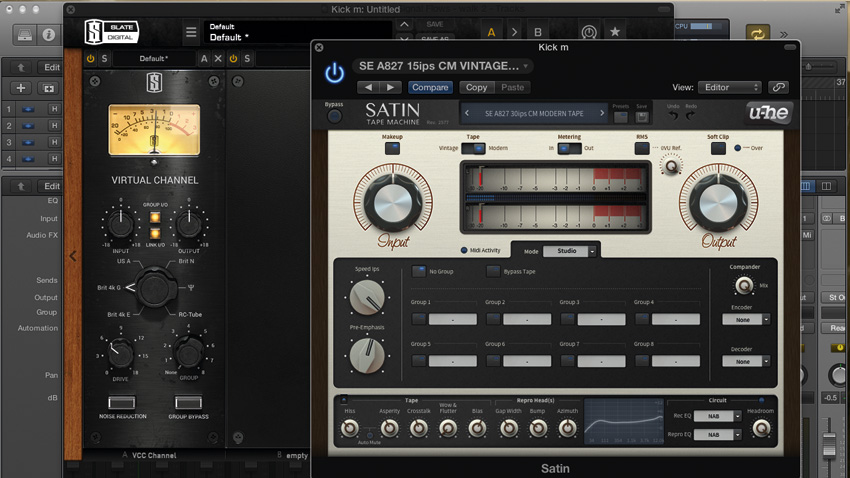
Step four: Now for an counterpart recording setup, with channels running through the mixing desk (originally for applying EQ and pinch "on the manner in", but hither we'll recreate just the saturation/warming aspects) before beingness recorded to tape. We're focusing solely on a drum kit, so the first footstep is to load up aqueduct and tape plugins for each pulsate kit rails, setting the channels to a make clean setting - the Brit 4k G in Slate Digital's Virtual Channel will do.
Full drum mix flat

Stride 5: Vintage tape saturates easily, while modern record at 30ips enhances high frequencies. With u-he Satin, nosotros're using vintage tape on our snare and boot tracks. For a fatter snare, button the level college and remember that the VU metering won't show the transient peaks, so the level could appear quite depression. For kick presence, push the level. Also, attempt unlike circuit EQ curves to see which sounds best.
Kick and snare dry
Kick and snare with tape sim

Step 6: To cure our weak and lifeless overheads, we'll change their aqueduct emulation to one that's more coloured, like Slate Digital'south RC-Tube - increasing the drive adds odd and even harmonics. Next in line is the tape machine. We're using a modern record at 15ips to add subtle thickness to the sound. A/Bing the results with the flat, unprocessed tracks reveals the divergence that this has made.
Overheads dry
Overheads with console and tape sim
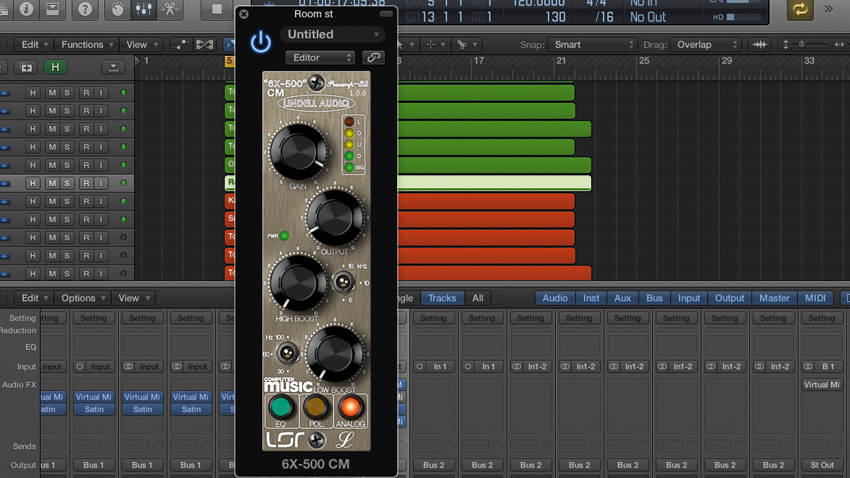
Step seven: Finally, permit's use a 'option and mix' chain on our room mics track - something only possible in the digital domain. The order is: mic preamp, tape on repro head, and so master buss channel processor. First, let's swap out the aqueduct emulation for a different one - the Lindell 6X-500 CM will work cracking. Using its transformer design and increasing the input bulldoze (and reducing the output) we're adding subtle harmonic distortion.
Room mics dry
Room mics with preamp sim
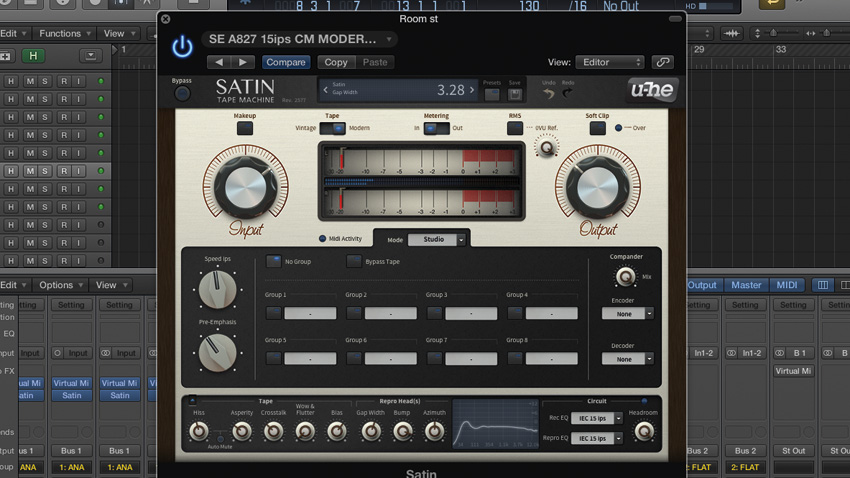
Footstep viii: Next, the Repro caput. Here nosotros're using modern tape at 15ips, which in itself adds roundness to the low frequencies and slightly curtails the highs. However, our plugin, u-he Satin, lets us adjust the head bump level and caput gap width, so nosotros tin further heave the low frequencies, and subtly influence where this boost is. This also influences our loftier-frequency response.
Room mics with preamp and record sim

Step 9: The concluding plugin in this concatenation, Slate Digital'due south Virtual Mix Buss, is designed for the principal osculation, merely here we're using it on a normal track channel. Information technology offers a number of mixing desk-bound simulations, and we're going for the classic SSL Due east serial-fashion mix bus (Slate'due south Brit 4k Eastward). This adds farther 2d and 3rd harmonic distortions as we increase the bulldoze. Finally, A/B-ing the results reveals an overall fatter sound with less harsh meridian terminate.
Full candy drum mix
Recording Week is brought to you in association with Universal Audio . Check out the Recording Week hub page for more than tips and tutorials.
0 Response to "Using Hardware Emulations to Use Daw Like Analogue Mixer"
Post a Comment